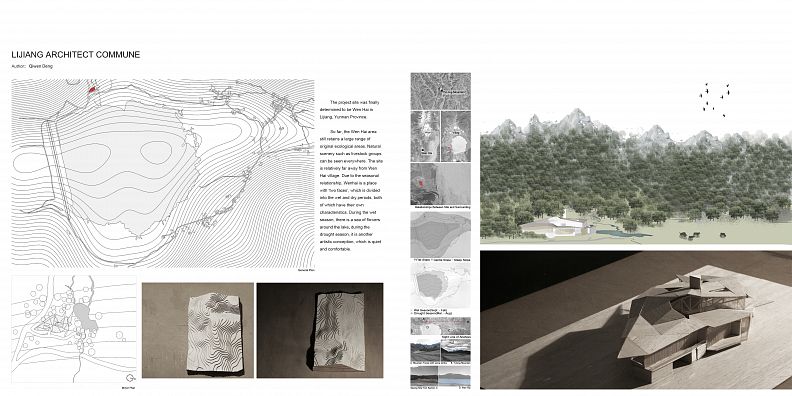LIJIANG ARCHITECT COMMUNE

Project idea
As I gradually dug into my major - architecture, I have observed many problems of industry in mainland China, like the hierarchy system in most design institutes and firms which has already formed an atmosphere of obedience and stifled creativity. In order to alleviate this situation, in the graduation design, I tried to design a completely flat commune of architects where architects were all equal to each other without the roles of superiors and subordinates.
Project description
The requirement of thesis is to design an architects commune with a flattening management model, covering an area of about 1,000 square meters, located in Lijiang City, Yunnan Province, which is famous for the YULONG mountain. And It’s in the southwest of China. The site is selected by ourselves, and must have a public kitchen. The entire design process needs to shoot a micro movie which is written by ourselves to assist the design. So I started a 10-day trip to Lijiang, and finally set up the site beside Wenhai.
After finishing the investigation, I connected the places where I did research in these ten days into a roadmap. I randomly folded the roadmap several times and made 5 possibilities. Then pick one of them as the basic point to the design.
At the same time I also finished my micro-film and divide it into twelve scenes, which respectively represent twelve mainly functional areas of the architect commune, and the shots which formed to each plot become the basis for the window opening of the functional area.
Technical information
During the process, I think the most challenging part of the project is the research in structure. Because the site is located in Lijiang, I deliberately found a 100-year-old private house explore, especially materials and structure. In page 5 of my undergraduate thesis in my portfolio, compared to the local house, the structure of the architects' commune is more complicated. Due to the irregular roofs and high-scale spaces, truss structures were added, combined with rammed earth and masonry wall as button support, which are the mainly local architectural materials in Lijiang. And I also think about the ecology design, like the use of the solar panels on the roof, the water storage from rain and so on.
Co-authors
Nope.







